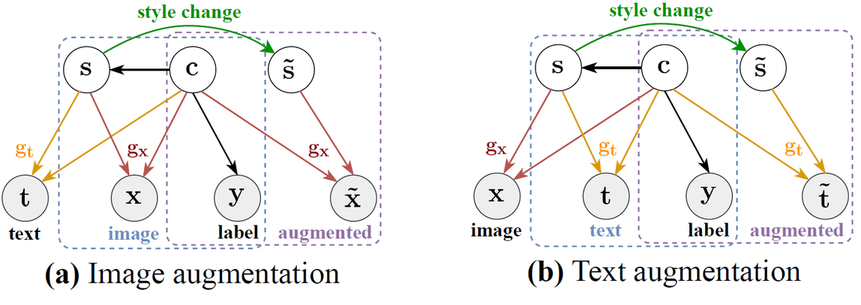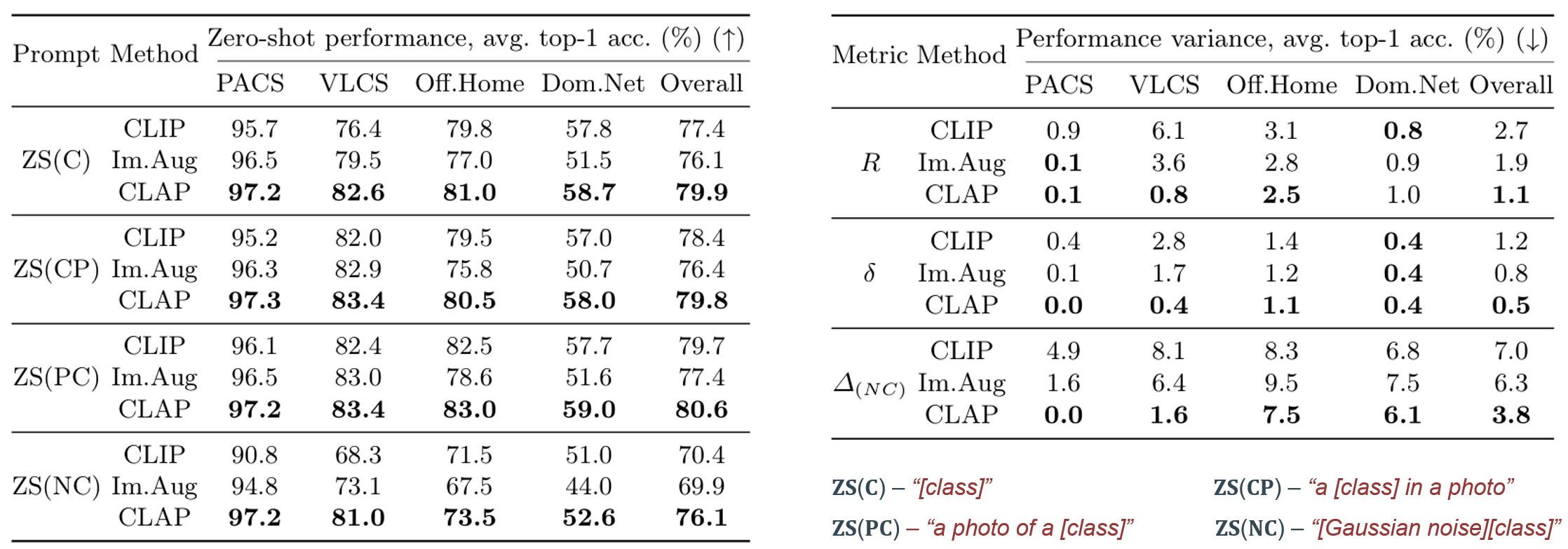
Contrastive vision-language models, such as CLIP, have garnered considerable attention for various dowmsteam tasks, mainly due to the remarkable ability of the learned features for generalization. However, the features they learned often blend content and style information, which somewhat limits their generalization capabilities under distribution shifts. To address this limitation, we adopt a causal generative perspective for multimodal data and propose contrastive learning with data augmentation to disentangle content features from the original representations. To achieve this, we begin with exploring image augmentation techniques and develop a method to seamlessly integrate them into pretrained CLIP-like models to extract pure content features. Taking a step further, recognizing the inherent semantic richness and logical structure of text data, we explore the use of text augmentation to isolate latent content from style features. This enables CLIP-like model's encoders to concentrate on latent content information, refining the learned representations by pre-trained CLIP-like models. Our extensive experiments across diverse datasets demonstrate significant improvements in zeroshot and few-shot classification tasks, alongside enhanced robustness to various perturbations. These results underscore the effectiveness of our proposed methods in refining vision-language representations and advancing the state-of-the-art in multimodal learning.








@Article{Cai2024CLAPIC,
author = {Yichao Cai and Yuhang Liu and Zhen Zhang and Javen Qinfeng Shi},
booktitle = {European Conference on Computer Vision},
pages = {130-147},
title = {CLAP: Isolating Content from Style Through Contrastive Learning with Augmented Prompts},
year = {2024}
}